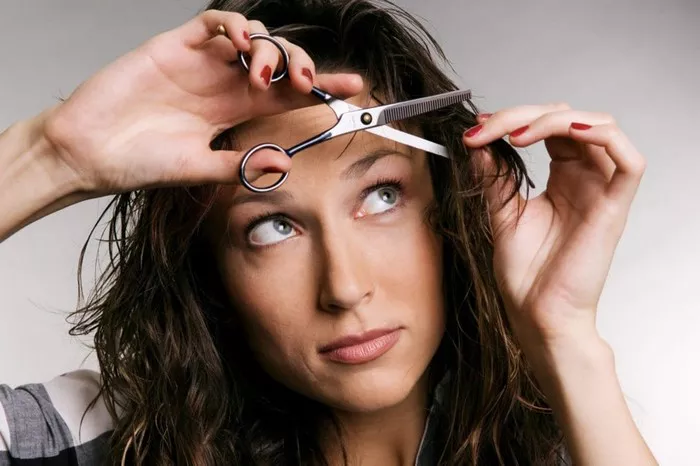Frontal baldness, also known as receding hairline or male-pattern baldness, can be a distressing concern for individuals of all genders. While genetics play a significant role in hair loss, there are proactive steps you can take to prevent and slow down frontal baldness. In this article, we’ll explore effective strategies, lifestyle changes, and targeted treatments to help you maintain a strong and healthy hairline.
1. Understanding Frontal Baldness
Before diving into prevention strategies, it’s crucial to understand the factors contributing to frontal baldness. Frontal baldness is often associated with a genetic predisposition, hormonal changes, and aging. The hormone dihydrotestosterone (DHT) is a key player in male-pattern baldness, leading to the miniaturization of hair follicles in the frontal region. In females, hormonal changes and genetics can also contribute to a receding hairline.
2. Maintain a Healthy Diet
A well-balanced and nutrient-rich diet is fundamental to overall health, including the health of your hair. Essential nutrients such as vitamins A, C, D, and E, as well as iron, zinc, and omega-3 fatty acids, play a crucial role in promoting hair health. Incorporate a variety of fruits, vegetables, lean proteins, and whole grains into your diet to provide your body with the nutrients it needs to support hair growth.
3. Avoid Hairstyles That Pull on the Hairline
Certain hairstyles, such as tight ponytails, braids, or cornrows, can exert tension on the hairline and contribute to frontal baldness. Opt for looser hairstyles that minimize stress on the hair follicles. If you frequently wear your hair pulled back, consider giving your hairline breaks between styles to reduce tension.
4. Gentle Hair Care Practices
The way you care for your hair can significantly impact its health, including the health of your hairline. Use a mild shampoo and conditioner that suit your hair type, and avoid excessive heat styling or harsh chemical treatments. Gentle care practices help maintain the integrity of your hair and reduce the risk of damage to the frontal region.
5. Scalp Massages for Circulation
Improving blood circulation to the scalp is crucial for maintaining healthy hair follicles. Regular scalp massages stimulate blood flow, promoting the delivery of nutrients to the hair follicles. Use your fingertips to massage your scalp gently in circular motions. This simple practice can contribute to a healthier scalp environment.
6. Stay Hydrated
Proper hydration is essential for overall health, and it also impacts the health of your hair. Dehydration can make your hair more prone to dryness and breakage. Ensure you are drinking enough water throughout the day to keep your body and hair well-hydrated.
7. Limit DHT Production
As mentioned earlier, DHT is a hormone associated with frontal baldness. While it’s a natural byproduct of testosterone, excessive levels can contribute to hair loss. Some individuals may consider using shampoos or topical treatments that contain ingredients like ketoconazole or saw palmetto, which have shown potential in inhibiting DHT production. However, it’s important to consult with a healthcare professional before incorporating such products into your routine.
8. Maintain a Healthy Weight
Being overweight or obese can contribute to hormonal imbalances that may affect the hairline. Maintaining a healthy weight through a balanced diet and regular exercise can help regulate hormones and support overall health, potentially reducing the risk of frontal baldness.
9. Regular Exercise
Engaging in regular physical activity has numerous health benefits, including improved blood circulation. Cardiovascular exercises and strength training can contribute to overall well-being, including the health of your hair. Aim for at least 150 minutes of moderate-intensity exercise per week to support your overall health and potentially reduce the risk of frontal baldness.
10. Consider Professional Treatments
For individuals concerned about frontal baldness, professional treatments may be an option. FDA-approved medications such as minoxidil and finasteride have shown efficacy in slowing down hair loss and promoting regrowth. However, these medications should be used under the guidance of a healthcare professional, as they may have side effects.
11. Hair Growth Laser Devices
Low-level laser therapy (LLLT) devices, such as laser caps or helmets, have gained popularity as non-invasive treatments for hair loss. These devices use low-level lasers or light-emitting diodes to stimulate hair follicles and promote hair growth. Research on the efficacy of LLLT for frontal baldness is ongoing, and individuals considering this option should consult with a healthcare professional.
12. Consult with a Hair Specialist
If you notice significant changes in your hairline or experience excessive hair loss, it’s advisable to consult with a dermatologist or trichologist. These specialists can assess the health of your hair and scalp, identify any underlying issues, and recommend personalized treatments or interventions.
Conclusion
Preventing frontal baldness involves a combination of lifestyle choices, proper hair care practices, and, in some cases, professional interventions. By maintaining a healthy diet, avoiding hairstyles that stress the hairline, practicing gentle hair care, promoting scalp circulation, staying hydrated, and considering professional treatments when needed, you can take proactive steps to preserve your hairline and promote overall hair health. Remember, early intervention and a holistic approach are key to addressing and preventing frontal baldness successfully.


